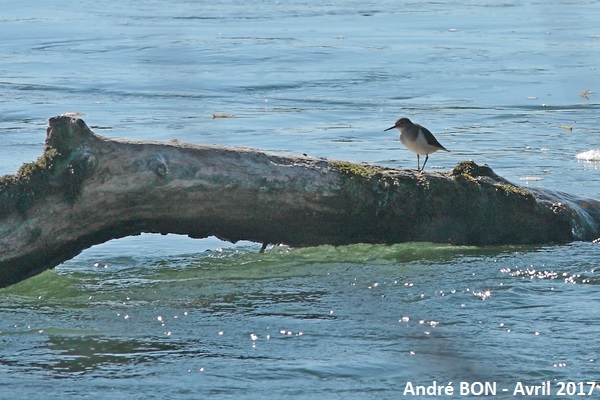
| Common Sandpiper (Actitis hypoleucos (Linnaeus, 1758)) |

|
|
Scientific name: Actitis hypoleucos (Linnaeus, 1758) Common name: Common Sandpiper French name: Chevalier guignette Order: Charadriiformes Family: Scolopacidae Size: Body size: 15 to 20 cm; Weight: 40 to 60 g; Wingspan: 32 to 43 cm. Habitat: Mainly banks of rivers and ponds but also other shallow water environments, estuaries, lagoons, etc. Food: Insects, worms, small crustaceans and small molluscs. Nesting: Nests are located on the ground, near water, and hidden among vegetation. There is a clutch of 3 to 5 eggs about late April. The young birds leave the nest very quickly. Migration: Northern birds migrate long distances to southern Africa, to Southeast Asia and to Australia. Geographic area: Northern and temperate regions of Eurasia. |
The Common Sandpiper is a small wader that can be recognized by the constant bobbing of its tail. The upper side is grey-brown barred with small dark brown markings. The underside is off-white and reveals the white shoulders. A thin white bar extends from the bill to above the eye. The beak is thin and quite short. The legs are greyish. A long white wing bar is visible in flight. The Green Sandpiper (Tringa ochropus) does not have white shoulders. |
| [To know more about the Common Sandpiper] [Top] |

|
I am used to regularly observing a few Common Sandpipers during my walks in the Basse Vallée du Doubs. I start with a shot a little far away and I will have to do a specific lookout to add some close-ups to this page. |